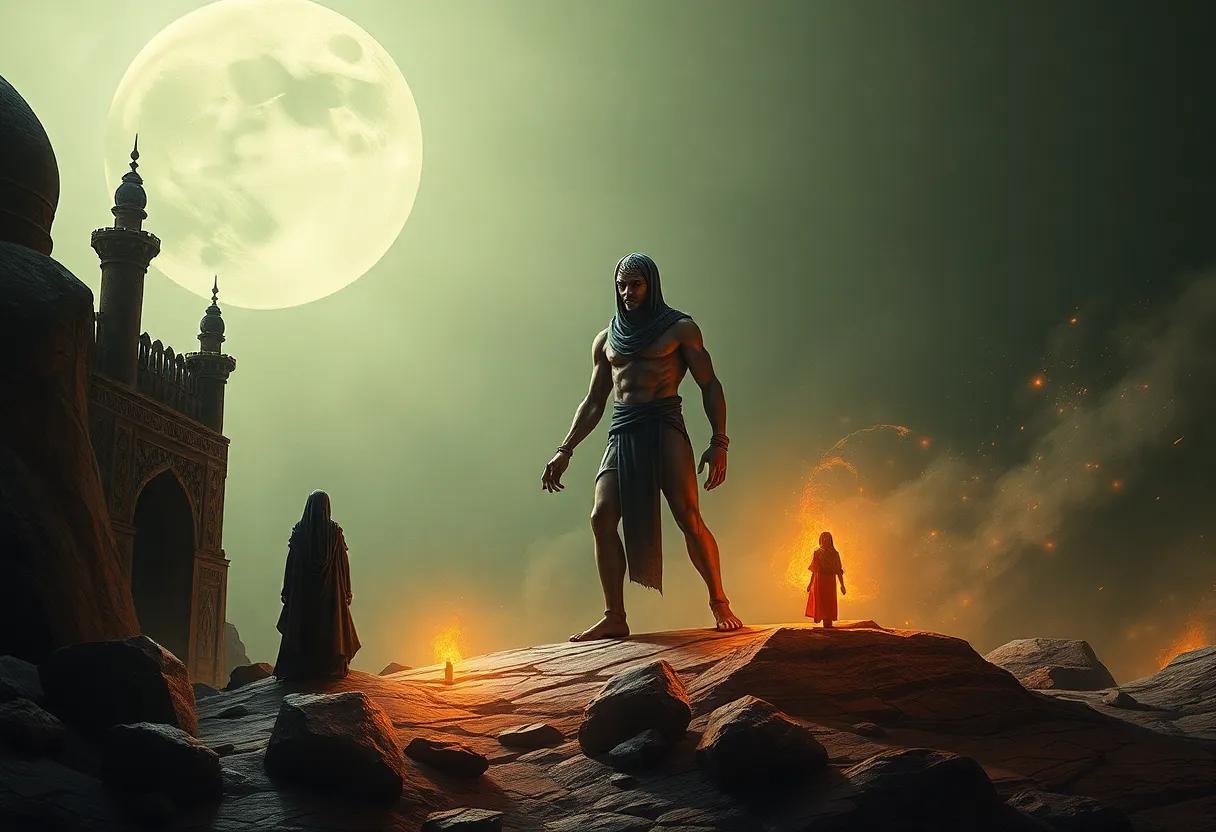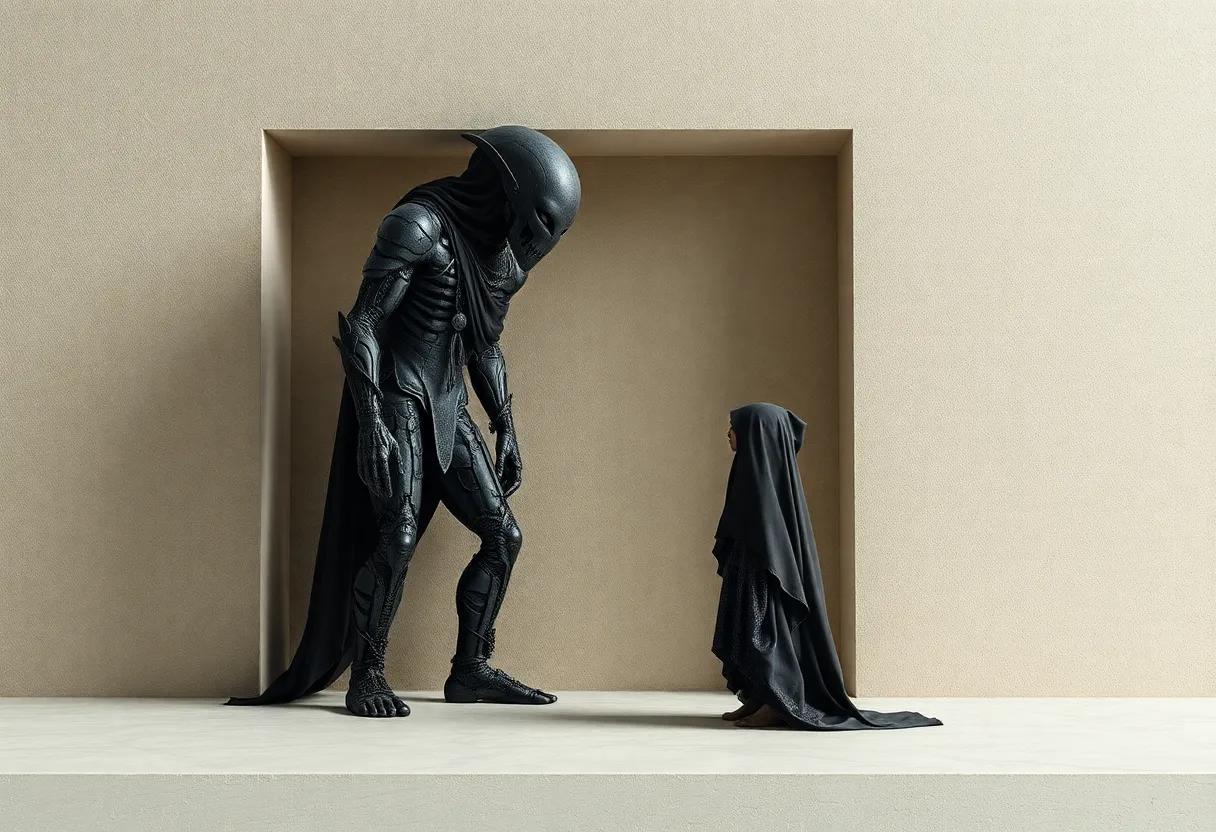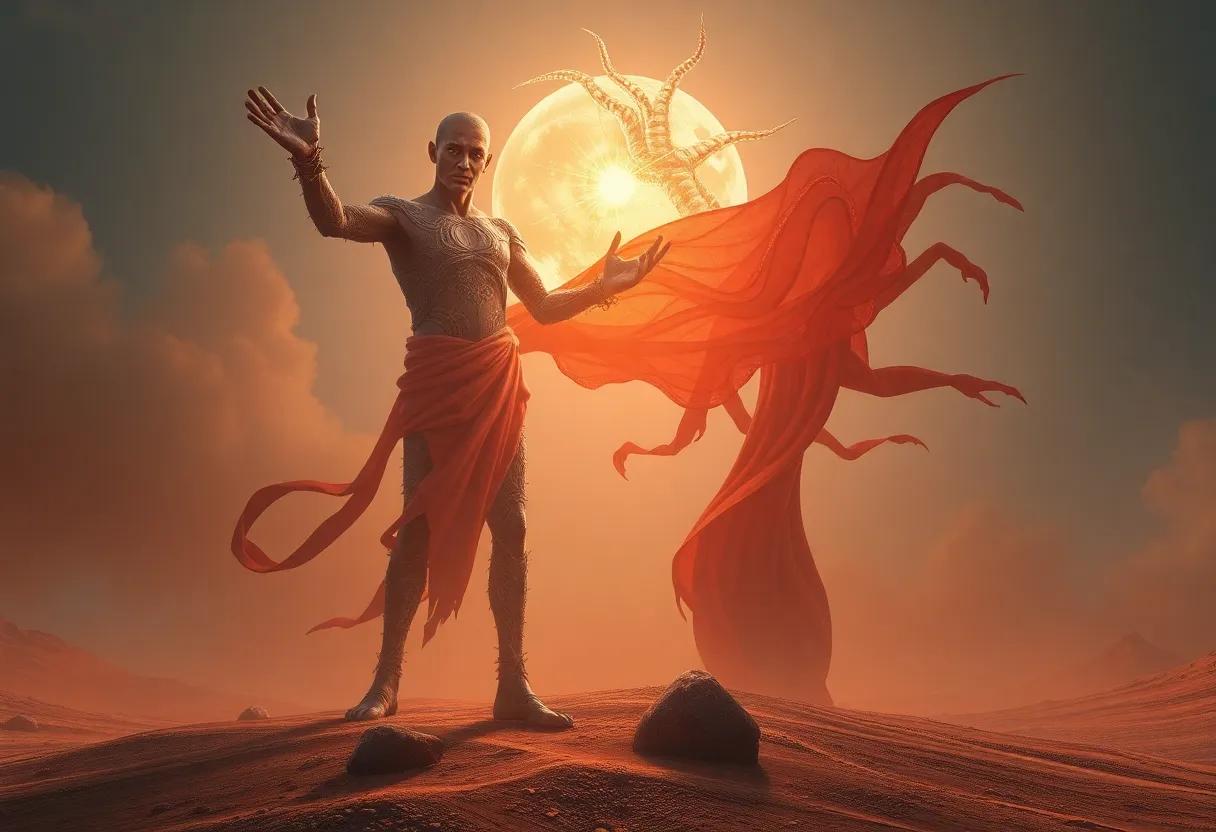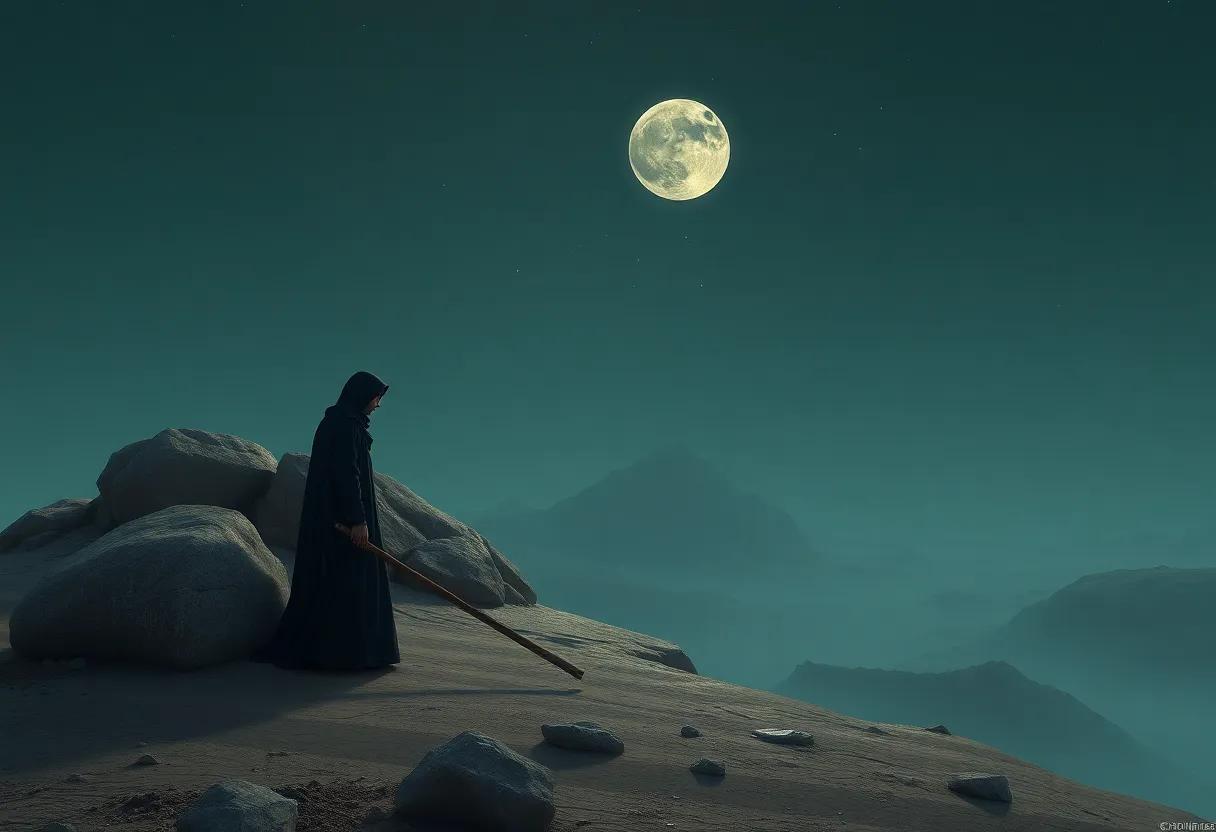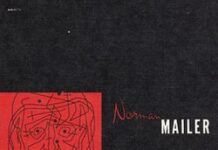In the realm where myth intertwines with history, The Golem and the Jinni emerges as a captivating tapestry of mystical creatures and cultural tales. This enchanting novel beckons readers into a world where ancient folklore breathes life through the journeys of two remarkable beings-each rooted in distinct traditions yet bound by shared humanity.As we delve into this review, we explore how the narrative weaves together elements of legend and reality, inviting reflection on identity, belonging, and the enduring power of storytelling across cultures.
The Enchanting Blend of Myth and History in The golem and the Jinni Illuminating Cultural Crossroads through Magical Realism and Folklore Traditions
Within the pages of The Golem and the Jinni, magical realism becomes a delicate dance between ancient mythologies and the bustling streets of 19th-century New York. The novel masterfully intertwines the supernatural essence of the Golem-a protector born from Jewish folklore-and the fiery, elemental nature of the Jinni, an enigmatic spirit from Arabic tradition. Each character’s story illuminates the tension and harmony between their mystical origins and the harsh realities of immigrant life, creating a vibrant tapestry where mythology breathes new life into historical experience.The rich interplay of these beings reveals how myths serve as vessels, carrying cultural identities across time and geography.
- Myth as Identity: The Golem’s silent strength symbolizes protection amid displacement, mirroring the Jewish diaspora experience.
- Elemental Freedom: The Jinni’s rebellious spirit embodies the longing for belonging and the conflict between tradition and modernity.
- Cultural Intersection: Their encounters highlight the coexistence and clash of diverse immigrant communities in early America.
By fusing folklore with historical realities, the narrative offers more than a fantasy-it becomes a cultural crossroads where themes of exile, faith, and transformation converge. This synthesis produces an intricate mosaic of belief systems, traditions, and emotions, inviting readers to reflect on the timeless negotiation between past and present. The story’s resonance lies in its ability to make legendary creatures palpably human, revealing how folklore traditions shape and redefine cultural memory. Below is a succinct overview of the elemental qualities and symbolic importance each creature embodies within the novel’s cultural dialog:
| Creature | Elemental Trait | Symbolic Meaning | Cultural Origin |
|---|---|---|---|
| Golem | Earth | Protection & Resilience | jewish Folklore |
| Jinni | Fire | Freedom & Rebellion | Arabic Folklore |
Deep Dive into the Complex Characters of the Golem and the Jinni Revealing Layers of Identity, Loneliness, and Belonging Across Worlds
At the heart of The Golem and the Jinni lies a profound exploration of identity, portrayed through two enchanting beings bound by their origins yet yearning for human connection. The Golem, shaped from clay and molded by ancient Jewish folklore, embodies a sense of duty and constraint, struggling to reconcile her predetermined nature with a deep desire for autonomy. In contrast, the Jinni, born from fire and steeped in Arabian myth, wrestles with his fierce independence and the haunting memories of his imprisoned past. Their intertwined journeys highlight how both characters grapple with loneliness-a global feeling magnified by their supernatural existences and cultural dissonance in a bustling, immigrant-rich setting.
Layers of identity emerge through their interactions and personal transformations, revealing themes that resonate beyond the fantastical:
- Belonging: Both characters seek acceptance in a world that neither fully understands them nor welcomes their difference.
- Isolation: Despite their power, they face an emotional solitude akin to that experienced by many immigrants navigating new cultural landscapes.
- Transformation: Their slow embrace of human qualities symbolizes the malleability of identity when confronted with empathy and connection.
| Character | Origin | Core Struggle | Symbolism |
|---|---|---|---|
| The golem | Jewish Folklore (clay) | Duty vs Desire | Control & Compassion |
| The Jinni | Arabian Myth (Fire) | freedom vs Fate | Wildness & Longing |
Exploring the Rich Symbolism and Themes of Creation, Freedom, and Fate Interwoven with jewish and Arab mythologies
The narrative intricately threads together motifs of creation, freedom, and fate, drawing profound inspiration from Jewish and Arab mythologies. The Golem, born from clay and brought to life through sacred Jewish rituals, symbolizes humanity’s yearning to harness divine power and the obligation intertwined with such acts of creation. In contrast, the Jinni embodies the elemental force of freedom, a spirit bound by cosmic laws yet fiercely autonomous, representing the unpredictable nature of fate and choice within Arab folklore. Together,these mythical beings mirror timeless questions about human agency,the consequences of our actions,and the interplay between destiny and self-determination.
- Creation: The delicate balance between divine will and human intervention.
- Freedom: The struggle against bindings, both physical and metaphysical.
- Fate: The entanglement of destiny shaped by ancient cultural wisdom.
This cultural synthesis illuminates how stories act as vessels carrying the values and existential inquiries of their people. The juxtaposition of the Golem’s crafted obedience with the Jinni’s wild liberty explores the paradox of control versus surrender. Through rich mythology, the tale challenges readers to reflect on how ancient beliefs continue to shape modern understandings of identity and destiny. Below is a comparison table highlighting key symbolic elements of each creature in the story:
| Aspect | The Golem | the Jinni |
|---|---|---|
| Origin | Formed from clay by human hands | Born of fire and elemental forces |
| Symbolism | Order, protection, constraint | Freedom, chaos, unpredictability |
| Connection to Fate | Bound to creator’s will | Bound by ancient cosmic rules |
The Setting as a Character How Early 20th Century New York City Frames the Mystical Encounter and Immigrant Experience
New york City in the early 1900s is more than a backdrop-it becomes a living, breathing entity that shapes the narrative’s pulse. The bustling streets, teeming with immigrants from all corners of the world, form a complex web where ancient myths and modern realities collide. This vibrant metropolis,cloaked in industrial smoke and echoing with the hopes of newcomers,heightens the mystical aura surrounding the golem and the jinni. The city’s neighborhoods,each pulsating with distinct cultural rhythms,transform the tale into a microcosm of struggle and survival,where folklore and identity intermingle beneath the towering skyscrapers.
Through the lens of early 20th century New York, the immigrant experience unfolds with poignant clarity. The protagonists’ extraordinary origins juxtapose with their human desires to belong, adding layers to the narrative’s emotional depth. The city acts almost like a third character, influencing their paths with:
- Relentless energy driving change and adaptation
- Fragmented communities holding tightly to heritage amidst assimilation
- Mysterious alleyways where the supernatural and mundane intersect
This intricate setting calibrates a symphony of cultural collisions, revealing how mythology adapts to new worlds and how immigrants carve out space in an unforgiving landscape.
| Neighborhood | Dominant Immigrant Culture | Mystical Representation |
|---|---|---|
| Lower East Side | Eastern European Jews | The Golem’s protective guardianship |
| Little Syria | Arab Immigrants | The Jinni’s fiery and elusive nature |
| Harlem | African Americans & Caribbean Immigrants | Understated mystical currents of resilience |
Narrative style and Pacing Balancing Poetic Descriptions with Engaging Plot Development That Captivates Readers’ Imaginations
The prose in The Golem and the Jinni deftly weaves lyrical imagery with a brisk narrative momentum, ensuring each scene is vividly painted without sacrificing the story’s pulse. Rich, poetic descriptions immerse readers into bustling immigrant neighborhoods and the eerie supernatural undercurrents threading through them. Yet, these ornate passages never linger excessively; rather, they serve as a backdrop to the unfolding mysteries and emotional arcs, maintaining a delicate equilibrium where aesthetic language enhances rather than eclipses plot progression.
Readers are guided through a narrative rhythm that thoughtfully balances moments of introspection with intense, plot-driven sequences. this interplay creates a captivating experience, marked by:
- Dynamic character insights that evolve alongside the storyline, deepening reader engagement
- Fluid shifts from atmospheric world-building to tension-filled interaction
- Strategic pacing that builds suspense while allowing breathers for reflection
Such skilled modulation heightens the story’s enchantment, inviting readers to linger in the mystical yet urgent world the author constructs.
Cultural Representation and Sensitivity Examining How Heritage and Mythology Are Respectfully Portrayed in a Multicultural Context
The Golem and the Jinni weaves together two rich mythologies from Jewish and Arab cultures, creating a tapestry that honors both origins with a delicate balance of reverence and inventiveness. By situating these mystical beings within a bustling, immigrant New york City, the narrative highlights not only the distinctiveness of each folklore but also the fluidity of cultural identity in a multicultural space. The author’s careful attention to linguistic nuances, customary customs, and historical contexts serves as a respectful nod to the heritage that shapes these legends. This approach invites readers to appreciate the unique qualities of each myth while recognizing their shared themes of resilience, freedom, and belonging.
Key elements of cultural respect are embedded in the characters’ journeys and interactions, which avoid reductive stereotypes or cultural appropriation. Instead, the story embraces diversity with a sensitivity that celebrates complexity:
- Authentic Voices: characters speak in ways true to their cultural backgrounds, enriching the narrative texture.
- Mythological Integrity: Traditional traits and powers of the golem and jinni are preserved and thoughtfully adapted to the new setting.
- Dialogue on Displacement: Both figures grapple with immigration and assimilation, reflecting real-world multicultural dynamics.
| Aspect | jewish Heritage (Golem) | Arab Heritage (Jinni) |
|---|---|---|
| Origin | Prague folklore, protector figure | middle Eastern desert spirits |
| Symbolism | Guardianship, obedience | Freedom, chaos |
| Role in Story | Silent protector | Witty trickster |
Recommendations for Readers Who Appreciate Magical Realism Historical Fiction and Deeply Woven Cultural Narratives
The Golem and the Jinni crafts a spellbinding tapestry that blends myth with history, perfect for readers who hunger for stories where magic breathes through the veils of reality. Fans of magical realism will find themselves enchanted by Chava and ahmad, two supernatural beings navigating human worlds shaped by late 19th-century immigrant life.The novel delves not only into mystical encounters but also explores the complexities of identity, faith, and belonging-making it a true cultural odyssey that resonates at both universal and deeply personal levels.
For those drawn to richly woven cultural narratives, this book serves as a portal into the crossroads of Middle Eastern and Eastern European folklore, illuminating traditions that frequently enough remain in the shadows. Its layered storytelling invites readers to savor themes such as:
- The Intersection of Myth and Modernity: How ancient legends adapt to a new era of immigrants and industrial cities.
- Complex Cultural Identities: Personal stories that traverse boundaries of religion, geography, and time.
- The Power of Community and Isolation: The struggle to find connection amid alienation.
| Magical Creature | Cultural Origin | Symbolism |
|---|---|---|
| Golem | Jewish Folklore | Protection, Creation, Limits of humanity |
| Jinni | Arabian Mythology | Freedom, Desire, The Otherworldly |
Visual Imagery and Atmosphere How Descriptive Language Brings the Magical World and Urban Landscape to vibrant Life
Through vivid and evocative descriptions, The Golem and the Jinni transports readers into a world where the mystical and the mundane intertwine seamlessly. The author’s use of visual imagery paints the urban landscape with strokes of magic-the smoky streets of New York become alive not just with the hum of everyday life but with the whispers of ancient legends. This layering of detailed sensory information-from the grit of cobblestones beneath weary footsteps to the shimmering glow of enchanted fires-helps readers visualize the setting as a tangible place with mystical depth. the book’s descriptive language doesn’t just construct an surroundings; it breathes living energy into it, making the cityscape as dynamic and mysterious as the creatures walking its streets.
The atmosphere shaped by such language creates a captivating tension between the old world and the new, emphasizing the cultural intersections that define the characters’ experiences. Elements that stand out include:
- Contrasting Lights: The flicker of oil lamps against neon signs, symbolizing the clash and blend of traditions.
- Textured Sounds: The eerie silence broken by distant chants or metallic clangs, hinting at unseen forces.
- Rich Aromas: Spices from street vendors mingling with the scent of damp stone and ancient forests.
These sensory details are crafted with delicate balance, enriching the narrative while emphasizing the coexistence of mysticism and modernity in the city’s fabric.
Themes of Otherness and Connection Highlighting the Novel’s Exploration of Human Emotions Through Supernatural Beings
The supernatural entities in The Golem and the Jinni serve as rich metaphors for the experience of alienation and the desperate human desire to belong. Both the Golem and the Jinni are embodiments of otherness, trapped between worlds-neither fully part of humanity nor entirely separate from it. This liminality gives the narrative a profound emotional depth, as each character grapples with identity, acceptance, and the burden of invisibility in bustling urban landscapes. Their struggles illuminate universal themes: the fear of rejection, the longing for connection, and the quest to understand one’s place in an ever-shifting society.
the novel deftly interweaves these supernatural origins with intimate human emotions, crafting a delicate balance between isolation and communion. Through their intertwined journeys, readers witness moments of shared vulnerability, surprising empathy, and the transformative power of friendship. Key elements that underscore this dynamic include:
- Contrasts between loneliness and companionship: Both beings wrestle with solitude yet find solace in unexpected alliances.
- Cultural displacement: The characters’ immigrant experiences mirror their mystical transformations, highlighting themes of belonging and estrangement.
- Emotional awakening: Despite their supernatural nature,the Golem and the Jinni display deeply human feelings like grief,hope,and love.
| Theme | Supernatural Reflection | Human Emotion |
|---|---|---|
| Isolation | golem’s created nature as a protector yet a stranger | Feelings of loneliness and invisibility |
| Connection | Jinni’s quest for freedom juxtaposed with desire for friendship | Longing for acceptance and understanding |
| Identity | Fusion of mystical origin with immigrant identity | Struggles with self-definition and cultural belonging |
The Role of Myth in Contemporary Storytelling Revisiting Ancient Tales for Modern Audiences and Their Resonance Today
ancient myths have long served as a mirror reflecting the complexities of human nature, and *The Golem and the Jinni* draws on this timeless tradition to weave a narrative where mystical beings embody the struggles of identity, belonging, and transformation. The Golem, sculpted from clay and brought to life through mystical rituals, symbolizes the search for purpose amidst confinement, while the Jinni, a fiery spirit bound by ancient laws, wrestles with freedom and predation. Their stories, though rooted in specific cultural folklore, transcend time and place, revealing universal themes that resonate deeply with modern audiences grappling with the nature of self and otherness in an increasingly fragmented world.
In revisiting these archetypal figures, the novel uses myth not only to entertain but also to explore enduring societal concerns. the collision of Jewish and Middle Eastern folklore presents a rich tapestry where cultural identity and historical displacement converge. This intersection is particularly vivid when we examine their contrasting characteristics:
| Aspect | The Golem | The jinni |
|---|---|---|
| Origin | Earth and clay | Fire and smoke |
| Purpose | Protector and servant | Trickster and free spirit |
| Emotional Capacity | Slow to feelings, learns empathy | Instinctive, volatile |
- Myth as metaphor: Illuminates the human condition through fantastical beings.
- Cross-cultural dialogue: Blends traditions to forge new communal narratives.
- Modern relevance: Reflects contemporary struggles with identity, alienation, and co-existence.
Reflections on Identity and Transformation in The Golem and the Jinni Offering Insightful Perspectives on self-Discovery and Change
At the heart of The Golem and the Jinni lies a profound meditation on the fluidity of identity and the intricate dance of transformation. Both mystical beings, forged from distinct cultural mythologies-the Golem from Jewish folklore and the Jinni from Arab tales-embody not only supernatural power but also the vulnerabilities of self-discovery. Their journeys through the bustling streets of early 20th-century New York become metaphors for the universal search to reconcile one’s origins with the relentless pull of change. As they navigate human emotions, limitations, and desires, readers witness a delicate balance between ancient tradition and the evolving self, reminding us that identity is neither fixed nor singular but a mosaic shaped by history, experience, and choice.
The novel opens avenues to reflect on transformation through:
- Intercultural encounters that challenge preconceived notions of self and other.
- Personal resilience amidst forces both magical and mundane.
- Adaptation as an essential,sometimes painful,aspect of growth.
Below is a simple comparison of how the Golem and Jinni experience identity shifts within their respective cultural frameworks:
| aspect | Golem | Jinni |
|---|---|---|
| Origin | Clay figure animated by mystical rituals | Fire spirit bound by ancient magic |
| Struggle | Control impulses; seek purpose | reclaim freedom; understand humanity |
| Transformation | Develops empathy and self-awareness | Softens wild nature; embraces vulnerability |
The Author’s Unique Voice and Expertise Bridging Scholarship and Imaginative Storytelling in Helene Wecker’s Debut Novel
Helene Wecker’s debut novel stands as a remarkable fusion of meticulous research and vibrant imagination, masterfully weaving together the threads of historical authenticity with rich, fantastical storytelling. Her unique voice emerges through a careful balance: she dives deep into the cultural,religious,and social nuances of early 20th-century immigrant communities in New York,while breathing life into mythical beings-the golem and the jinni-in a way that feels both credible and enchantingly otherworldly. This blend of scholarship and creative narrative invites readers to explore identity, belonging, and transformation not only through the lens of these mystical creatures but within the broader human experience. Wecker’s expertise shines in her portrayal of nuanced characters whose internal struggles reflect universal themes, grounding the supernatural elements in genuine emotional truths.
What sets her apart is the seamless integration of diverse cultural traditions and folklore, expanding the novel’s appeal beyond mere fantasy enthusiasts to lovers of literary fiction and cultural history alike. Some key aspects highlighting her narrative craftsmanship include:
- Authentic Linguistic Detail: The use of period-accurate language and dialects enriches character voices,enhancing immersion.
- Cultural Intersectionality: wecker explores the crossroads of Jewish and arab immigrant experiences, creating a vibrant tableau of coexistence and conflict.
- Moral Complexity: Characters defy simple categorization, embodying both mythic archetypes and fully realized human psychology.
| Element | Scholarly Depth | Imaginative Storytelling |
|---|---|---|
| Historical setting | Immigrant New York, early 1900s | blended with magical realism |
| Mythical Creatures | Rooted in Jewish and Arab folklore | Humanized, engaging characters |
| Thematic Exploration | Identity, faith, assimilation | Transformation, belonging |
In traversing the woven worlds of The Golem and the Jinni, we encounter a narrative where myth and history dance in delicate harmony. This exploration of mystical creatures grounded in rich cultural tales invites readers not only to witness fantastical beings but also to reflect on the human experiences they mirror. As our journey through the book closes, the lingering echoes of ancient legends remind us that even in the most extraordinary stories, the threads of identity, belonging, and transformation remain profoundly universal.

